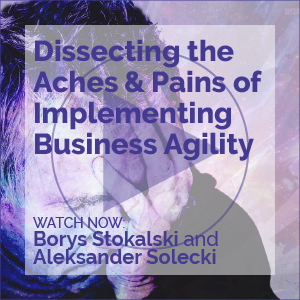Biggest Digital Transformation Risk Is Human, Keep Digital & Data Architecture Options Open...
Federated Learning’s Potential for Joint AI Development Efforts
Developing High-Performance Agile Coaches
Ingredients for Enterprise Agility, Part II: Organizing and Planning for Enterprise Agility
A New Look — The Automotive Industry, Post-COVID: A Q&A
In a recent webinar, Andreas Schlosser, Alan Martinovich, and Philipp Seidel examined the state of the automotive industry and what it might look like after the pandemic. They urged industry players — manufacturers, dealers, distributors, OEMs, and the full supply chain — to make bold decisions right now to be ready for a “new normal.” In this Advisor, we share some of the answers to questions participants asked about the actions carmakers should take now to set themselves up to win in the post-corona era.
A New Look — The Automotive Industry, Post-COVID: A Q&A
In a recent webinar, Andreas Schlosser, Alan Martinovich, and Philipp Seidel examined the state of the automotive industry and what it might look like after the pandemic. They urged industry players — manufacturers, dealers, distributors, OEMs, and the full supply chain — to make bold decisions right now to be ready for a “new normal.” In this Advisor, we share some of the answers to questions participants asked about the actions carmakers should take now to set themselves up to win in the post-corona era.
5G Will Power the Next Evolutionary Step for the IoT
Getting Past Tradition: Expanding the Scope of EA in the Organization
Utilizing AI to Extract Structure from PDFs
Next-Generation Analytics: Is it a Data Lake or a Data Mart?
Data Strategy: From Vision to Roadmap, Part I — Vision
Data Strategy: From Vision to Roadmap, Part I — Vision
Learning to Lead Collective Creativity, Part II: Leading So That No One Is Following
How to Succeed with LC/NC Solutions
How to Succeed with LC/NC Solutions
Low-Code/No-Code-enabled Citizen Developers: Catalysts to Innovation
In today’s highly competitive environment, it can be challenging to fulfill the development and operational demands needed to keep your businesses running while also continuing to expand and enhance your digital capabilities. This is where “citizen developers” can help — and where “low-code/no-code” (NC/LC) solutions shine.
Low-Code/No-Code-enabled Citizen Developers: Catalysts to Innovation
In today’s highly competitive environment, it can be challenging to fulfill the development and operational demands needed to keep your businesses running while also continuing to expand and enhance your digital capabilities. This is where “citizen developers” can help — and where “low-code/no-code” (NC/LC) solutions shine.
Assessing the Value of EA with Metrics
How Business Architecture Can Help Achieve UN Sustainable Development Goals: A Q&A
The Cutter Edge: Life and Data in a Time of Pandemic, Never Waste a Good Crisis, more!
The Cutter Edge: Life and Data in a Time of Pandemic, Never Waste a Good Crisis, more!
Settlement Could Set Regulatory Precedent for Unauthorized Use of Consumer Data
A recent settlement between the US Federal Trade Commission (FTC) and photo app developer Everalbum, Inc. could have significant repercussions for organizations developing machine learning (ML) and other artificial intelligence (AI) models using consumer data. The settlement requires Everalbum to delete the face recognition models and algorithms it allegedly developed by using photos and videos uploaded by its users.





















